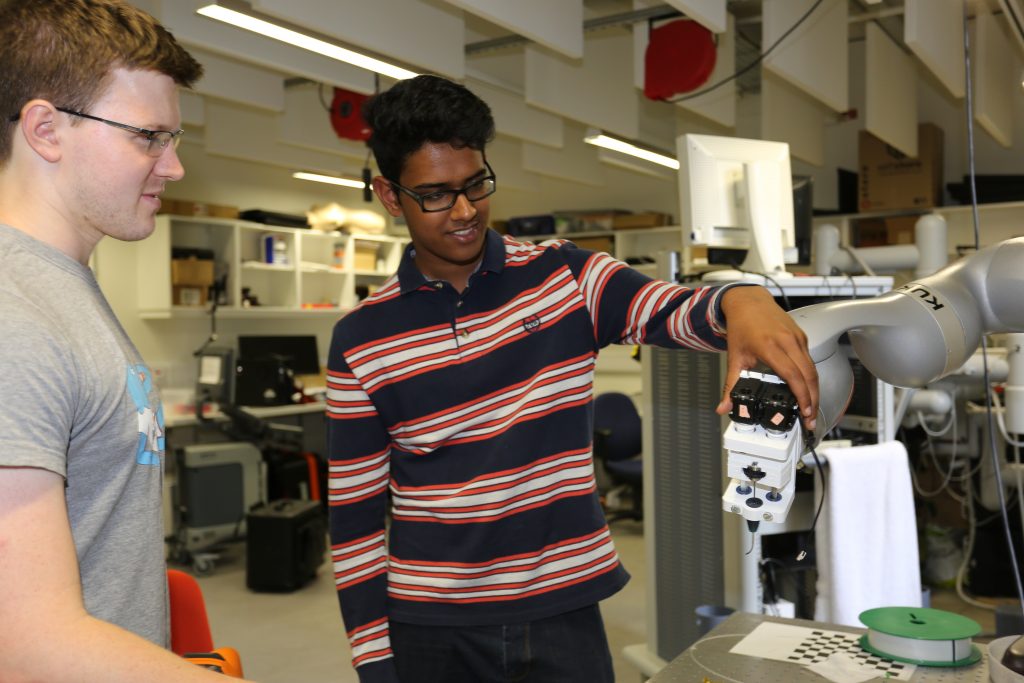This summer we were fortunate enough to be assigned a student through the in2science placement scheme. in2science is an award winning organisation which gives students the opportunity to work alongside STEM scientists, and receive the advice and information they need to progress to University and STEM careers. Sahil Jain is a 6th Form Student who joined us for two weeks. His experience at the lab is outlined below.

What are you currently studying at A-Level?
Currently at the end of my year 12 studies, I am studying maths, further maths, physics and chemistry. I hope to continue my education through university studying mathematics.
What inspired you to apply for the in2Science Placement Scheme?
As a curious student studying STEM subjects at school, the in2Science scheme was the perfect opportunity for me to get a taste of the type of work STEM scientists and researchers do on a day to day basis. This medical physics placement was especially good because it encompasses a variety of subjects from computing to neuroscience to mathematics.
Can you describe the research project you are working on at UCL?
The current project, known as GIFT-Surg, is a medical imaging project focusing on fetal surgery. It aims to provide surgeons with extremely accurate images, both pre-operative and in real time. Some of the focus is on minimally invasive surgery; working with endoscopic imaging to construct a 3D image of the environment inside the womb which the surgeon can have access to in real time. Another focus is on improving the tools that surgeons use; making them flexible and improving their clarity in air and amniotic fluid.
What has a typical day been like during your placement?
All of my days have been so varied here that describing a typical day is impossible. However, every day comprised of doing some sort of desk work which ranged from coding in Python to design work using CAD software. There was always some sort of hands on research going on in the labs too, such as producing phantoms out of agar for use in multiple experiments. There were also plenty of exciting technologies to see such as the surgical robots at Hampstead Road and I even witnessed an MRI scan of the brain. Throughout the placement I also spoke to many of the scientists and PhD students about their research
What tasks have you worked on during your placement?
The first task given to me during my placement was a coding project in Python. Initially this was a bit overwhelming as I had very little previous experience of coding. The task was to create a program which could crop out images of 30 year old brain MRI scans from a file. This was useful to the researchers as they could stack these images to construct a 3D view of the brain and compare that to modern MRI scans. During the week I learnt how Python works and managed to start the code for the team to continue with.
Another interesting task during my placement involved designing a case for a public engagement experiment demonstrating the photo-acoustic effect. I used CAD software, known as Onshape, to produce the designs and even made a prototype model out of cardboard to test it out. The design was then laser printed onto plywood and acrylic and lined with soundproof foam. The new case will reduce the noise feedback which was previously a design flaw of the experiment.
A really practical task I worked on involved making a phantom out of agar and water by heating it multiple times and de-pressurising it to get rid of the air bubbles from it, solidifying it. This phantom was used as part of another photo-acoustic experiment involving a laser, which the team use to test the prototype surgical devices under development.
What is the most important lesson you will take away from this experience?
I believe I have gained many skills and learnt a lot from my two weeks here at the Translation Imaging Group. However the most important one I think is that whilst research can be very independent, collaborating with others and talking to people is crucial in order to progress in any field.

